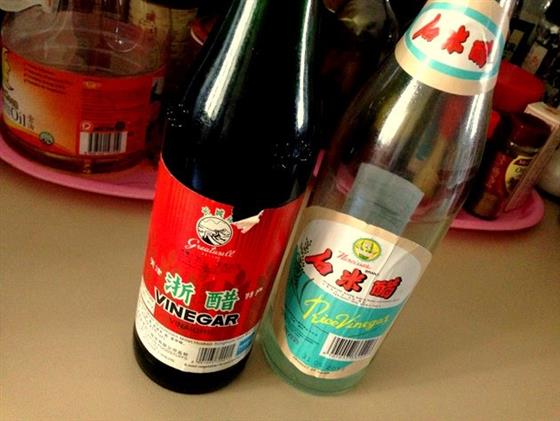
Chinese Vinegar: Black or White?
By Sheere Ng - Wednesday, Feb 27, 2013
Ever come across recipes that call for vinegar but short of stating whether it is black, white, red or cider? Forget about doing the “eeny, meeny, miny, moe” because their contrasts are more than the colours can reveal. We give a low-down on the two most common Chinese vinegars in home kitchens – black and white.
Taste
To understand why they taste the way they do we have to learn how they are produced. The making of Chinese black vinegar or matured vinegar, also known as 乌醋, involves a two-step fermentation of Chinese sorghum or glutinous rice. The first step turns the sugar in these starting ingredients into alcohol. The second fermentation, which traditionally takes place in ceramic vat, converts the alcohol into acid – the reason of vinegar’s sourness.
The whole production takes six months to one year to complete, producing a fragrant, full-bodied and malty flavoured vinegar. There is a concession in the culinary world that the best Chinese black vinegar either comes from Zhenjiang or Shanxi.
In comparison with the black vinegar, the making of white vinegar seems more slapdash. Alcohol is first distilled to extract the flavourless ethonal, which is then oxidised to produce acetic acid – the main ingredient of white vinegars. Even though the starting ingredient of the alcohol could be a luscious crop (rice, wheat), the distillation process eliminates such quality. This explains why white vinegar’s sourness tends to be harsh and jarring.
Culinary Use
This does not mean that white vinegar is inferior to its darker cousin. Some regions in China exploit the former’s sharp flavours to bring out the pungent and intense characteristics of their cuisines. People in Hunan and Sichuan, for example, prefer white vinegar to flavour their hot and sour soup, but the Cantonese uses black vinegar for the same dish, according to Chef Huang Ching Biao of Jin Shan.
White vinegar is also preferred in local dishes and condiments when acidity is required, without altering the flavours of other ingredients. “For achar we use white vinegar to add sour taste. The flavours will come from the rempah,” says Mdm Betty Lim, a Nonya bibik.
Black vinegar is used in dishes like braised pig’s trotter and Shanghainese smoked fish when its malty flavour is desired.
Other Uses
In terms of health, black vinegar packs more benefits. It is said to contain 10 times more amino acids, which helps to lower blood pressure. Rumor has it that drinking black vinegar also helps losing weight. But culinary purpose aside, white vinegar has more use in the kitchen. Due to its high level of acidity, it is useful for killing germs on chopping boards, cleaning metal kitchenware and removing odours in lunch boxes, ovens and water flasks.
Looks like both black and white vinegars are handy in the kitchen and so it’s best to just have both.



